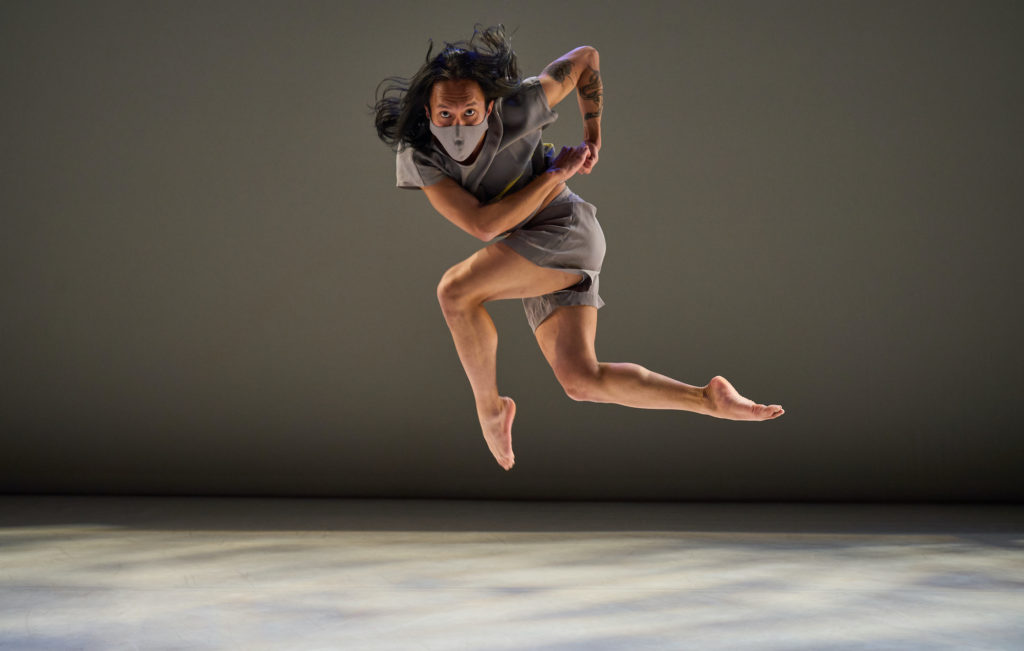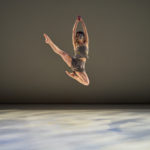Body and Light: Winnipeg’s Contemporary Dancers’ gift of presence - Vancouver Ballet Society
- Home
- Features 2020 - 2023
- Body and Light: Winnipeg’s Contemporary Dancers’ gift of presence

By Holly Harris
When she took over the reins last season as Winnipeg’s Contemporary Dancers’ artistic director, Jolene Bailie could never have imagined in her wildest dreams that her inaugural major production for the 56-year-old company would be forged in the crucible of a global pandemic. The dancers had to rehearse while wearing face masks and following physical distancing protocols.
Yet like artists of all stripes around the globe, Bailie has pivoted — hard — to create her latest work, Body and Light. Originally planned for the company’s usual stomping ground, the Rachel Browne Theatre, the piece has morphed into a drive-in parking lot performance at Cercle Molière, located in Winnipeg’s historic Saint Boniface district, May 27-30, with a second distinct, filmed version available on demand from June 3-20. [Editor’s note, May 28, 2021: The May performances have been postponed due to the pandemic, but the online version is going ahead.]
“The body and light are themes that have come back to me daily during the COVID-19 pandemic,” Bailie shares of her latest creation. “We cannot escape the body and we need light, whether that is the light that is inside us, or it is experiencing a sunrise or a sunset, or it is finding light when there is darkness, or it is simply a concept that can assist to move forward.

“The idea that energy can never be created or destroyed is also something that keeps coming back to me. We do not create energy ourselves; we are a vessel for energy to flow. The most important thing is that we keep the channel for flow open,” she says.
When so much dance this past year has been offered in bite-sized solos and duos, the 37-minute show boasts a larger ensemble comprised of six local dancers performing (with face masks) in a white-box space. The choreographer’s own design of silvery grey and yellow costumes, and a driving electro-acoustic score by Susan Chafe, round out the production.
Bailie is known for her visual, complex works staged across Canada and internationally, including New York, Beijing, Xi’an and Stuttgart. She choreographed 11 full-length contemporary pieces for her former company, Gearshifting Performance Works, including All You Can Eat/The Top? (2014) and the visually arresting Hybrid Human (2010), created in conjunction with Canadian visual artist Wanda Koop, which premiered at the Winnipeg Art Gallery to critical acclaim.
Her latest creative process, with WCD, began with small cohorts of dancers, who began in-person rehearsals last September, honing the visceral choreography, including signature body isolations and gestural movement vocabulary. During the excerpt I watched in-person at a rehearsal, the dancers frequently punctuated their own fluid phrasing with body slaps that cracked like whips — particularly striking during these distanced times as they literally make physical contact with their own flesh, in the absence of typical partnering such as lifts.

“We all live in a vacuum now. Nobody shakes hands; nobody hugs anymore. So when a dancer strikes themselves, it’s like acknowledging, ‘This is my corporal body. I’m not just existing through a screen and am still here,” Bailie states poignantly.
That deep sense and even craving for human connection runs like a leitmotif throughout the work. Individual masked dancers in Bailie’s democratic, organically derived ecosystem draw closer to each other — albeit never touching — for what she refers to as “intangible little coding” moments through eyes and gestures. Still others offer their watchful “gift of presence” while literally waiting in the wings for their turn in the spotlight.
That conscious attentiveness also builds stronger tangible and intangible emotional connections through “shared experience” between the artists. And, when it is finally performed live, from an audience, which normally feeds performers with their own energy, including applause — sorely missed during today’s omnipresent bounty of live-streamed shows.
“Being there, and also giving space and physical presence might not always be obvious in a stage show, but it’s fundamentally important to this production,” Bailie says. “The dancers are interconnected on many different levels, like a celestial harp, with each person playing the heartstrings and the physicality of the others. It’s their collective energy, and resonance with each other that is being explored in this new work, whether dancers are onstage, or witnessing each other dancing while still each maintaining their individual strengths.”
When asked if she might define her new work as a “pandemic piece,” Bailie says: “Everything right now is going to be a type of ‘pandemic piece,’ but it’s not something that could only be done during a pandemic, or because of the pandemic. Yet we wouldn’t be human if the pandemic didn’t influence us. We’re communicating differently with each other through masks, and processing information differently.”
“I’m very proud that we’ve been able to continue with our season at WCD. We might be in this state of ‘up-and-down’ for quite some time and we need to be prepared for that, as well as become comfortable with the unpredictability of the situation,” she says.
“It’s a very thoughtful time.”

